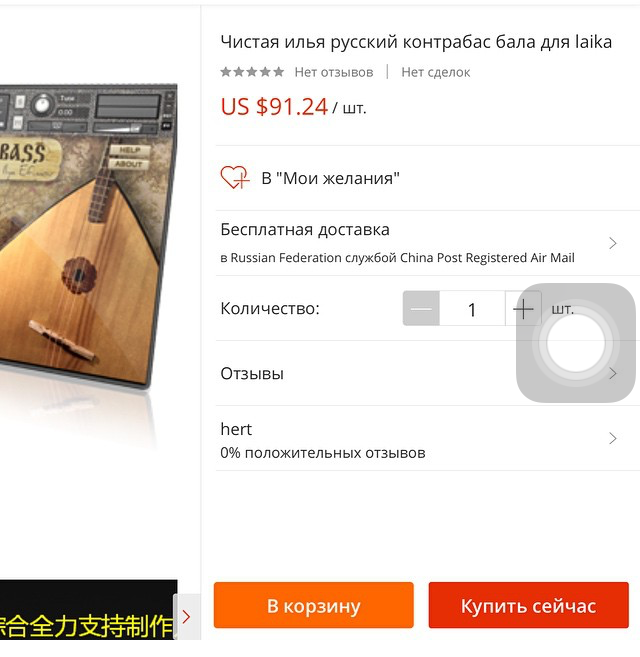Translate cannot be localized: how to make the site understandable to foreign users
 In an era of globalization, IT companies and startups are actively entering new markets. One of the key steps in this direction is the translation of the site into foreign languages. In this post we will share how to start localization, what to consider and what pitfalls to expect.
In an era of globalization, IT companies and startups are actively entering new markets. One of the key steps in this direction is the translation of the site into foreign languages. In this post we will share how to start localization, what to consider and what pitfalls to expect. According to CSA (a leading analytical organization in the market of linguistic services and technologies), an international study of consumer preferences of consumers , the fuller the product is described in the customer’s native language, the higher the likelihood that they will buy it. A little bit about the terms
Strictly speaking, sites do not translate, but localize. Localization is not just a translation from one language to another. This is a comprehensive adaptation to the culture and realities of the market, as a result of which the texts on the site, graphics, multimedia, layout - everything looks like the target audience expects. That is why it is very important to take into account many nuances, including those that at first glance may seem insignificant. For example, to think about the length of words in the target language (they are shorter in English than in Russian, and longer in German) already at the interface design stage. For example, “exit” and “exit” are still not so different, but the German “Beenden” and the Chinese 退出 are already pulling at the task for interface designers.
Website translation quality
A site is the face of a company. Users do not have the opportunity to try the product. Attitude to it is born on the basis of UX and the perception of the text - information content, presentation style, literacy.
There are two commonplace truths in translation. Firstly, everyone - even extremely qualified specialists - sometimes make mistakes. Secondly, if two people discuss the quality of a translation, they will surely have different opinions. Therefore, in the localization of sites, the role of a formalized quality assessment system is very important, in which the “frequency” and “weight” of errors per a certain amount of text are taken into account, and the final score is also calculated.
The evaluation process looks like this: a specialist studies translation and fixes errors in a special form, classifying them along the way. After that, he uses a special formula to calculate the “quality index” in the range from 0 to 100. With a three-stage technological scheme (translator, editor, and corrector) recommended for localizing sites, software, and marketing materials, this indicator should be at least 90.

About the performers
The first localization rule: translators, editors and proofreaders must be native speakers of the target language living in the respective country. At a minimum, it’s critical to involve media at the stages of translation and editing.
The contractor must know the specifics of a certain area. A seller of coconuts on a Philippine beach is a native of Tagalog, but is unlikely to understand the design of telecommunications equipment. Contact translators and editors who have the necessary experience. They know the terminology, know industry competitors, and know how to ask the right questions that can help you improve your site or product description.
How to prepare a site for localization
In an ideal case, for localization you will need:
- terms of reference for a localized version of the site,
- source codes of the site in a specific format (more on that below),
- terminology glossary (list of key terms in the original and translation languages), compiled by yourself or with the participation of the contractor,
- established interaction with those who develop and maintains your site.
If you contact a translation company, localization specialists will help you with the preparation, but in general, modern automation technologies allow you to independently build an effective and economical production process.
TK for translation
Basic TK describes what to translate, for which audience, into which languages, for how long and in what format the result is needed. Since the cost of the translation is considered based on it, decide which content to translate and which not. For example, you can do without a news archive for the long past years: its localization can be expensive, and it will not give significant benefits in a new market in all cases.
Sometimes it’s difficult to immediately separate the important from the unimportant - for example, if we are talking about large Internet resources and tens of thousands of pages accumulated over the years of work. Translation companies in such cases analyze the site map, make a detailed calculation of volumes and costs for all sections and pages. Such a report helps to understand where a lot of content has accumulated, and make an informed decision about what to translate and what you can do without.
Sources
The presence of source files (html, xml, doc, xls or others) simplifies and reduces the cost of localization, and also saves strength and nerves - you are calm that the artists will definitely not translate too much and won't forget anything.
Throwing off a link to your website to the performers marked “transfer to Wednesday” is not the most effective way of setting the task, although it works. It’s better to indicate what exactly to translate, and give access to the CMS site so that the artists immediately work with the source files.
Keep in touch with the localization team and discuss with them the key components of the project. As a result, you will receive files in the desired format and encoding and easily embed them on the site. Or, the performers will do it if you agreed with them and gave access to the CMS.
Source Board
Artists translate faster and better if the source code is written in a good language and completed in terms of meaning. Therefore, give the translators the final version of the text, which you will no longer rule on your side, since updating the sources slows down the process and leads to additional costs.
The main site is
very useful contact with the team that created the site, understands its logic and is engaged in its support and content - it can be both full-time developers and third-party contractors. Performers will be able to discuss with them issues that arise during the localization process, clarify controversial issues and gain access to linguistic testing (about it below).
As happens in life
 Let’s say the deadlines are tight, the translation is needed as soon as possible, but without sacrificing quality. In this case, modern technology will help. For example, the SmartCAT solution helps organize the parallel work of several specialists: several translators can work on a project at the same time. They will not interfere with each other: the technology will help each artist reuse in real time what others have already translated or himself. The editor starts to work, without waiting until the project is fully translated. This helps to maintain the unity of terminology and style and speeds up the implementation of large projects several times.
Let’s say the deadlines are tight, the translation is needed as soon as possible, but without sacrificing quality. In this case, modern technology will help. For example, the SmartCAT solution helps organize the parallel work of several specialists: several translators can work on a project at the same time. They will not interfere with each other: the technology will help each artist reuse in real time what others have already translated or himself. The editor starts to work, without waiting until the project is fully translated. This helps to maintain the unity of terminology and style and speeds up the implementation of large projects several times.If there is no time or budget for a high-quality three-step translation (when a translator, editor and proofreader are working on it), then the regional partner for whom the translation is prepared can help with proofreading: he understands the product. In this case, you can make a translation without an editor-carrier, but with proofreading to avoid typos, errors and other shortcomings.
If you need to translate marketing texts to launch the product, we strongly recommend that you additionally involve an editor-rewriter. He adapts the translated text and correctly emphasizes. Other work may be required: redrawing images, changing the page template, etc.
We also recommend that you do a linguistic check of the brand name. It helps to find out if the translated name of your company or product has hidden negative connotations, because of which consumers in the new market will not want to buy your product and use your services. In a good way, this should be done at the very beginning, when you just enter the market of this country. But if you suddenly missed this stage, do not forget to do it at least now.
In our practice, there have been cases when, after checking in dozens of languages, it became clear that for some regions it was necessary to change the name. For example, one brand bore the name of an animal - a hamster, which in the minds of Arab users causes negative associations.
Saving with a car
Whether to include the machine translation stage in the localization depends on the complexity of the source texts, the budget, the amount of time and quality requirements for the result. For example, if you need to translate a large array of the same type of information, and time and budget are limited. Machine translation is often used by large e-commerce sites, which contain descriptions of thousands of products and there is user-generated content (reviews, comments). For them, this is justified: according to the photo, buyers understand what kind of product they are offered, but often there are also sets of incoherent words.
Machine translation is suitable in cases where the text is simple and unambiguous (suitable for large companies with a strong competitive advantage, when, for example, the low price of goods outweighs the translation quality). But for this, technology is usually tuned up - they train a specific machine engine for certain texts from a given area, adding accumulated glossaries and translation memory databases on a topic. Then the editor works on the result of such a translation: in the industry, the process is called post-editing, and the specialist is called the post-editor.
The translator works with machine translation.
Linguistic testing.
This is the final stage of localization and an important component of quality control. The localized files are uploaded to the site, then its screen by screen is viewed by an expert tester according to the approved plan. He evaluates translations in context, makes sure that there is no cropped and untranslated text, studies the correct display of fonts, additionally checks the text for grammatical correctness, fixing all comments in a special form (bug report). Next, the necessary edits are agreed with the customer and entered into the working files.
Unfortunately, localization is usually needed "yesterday", so customers skip this step. But, as practice shows, it saves a lot of time, which is then spent on additional edits and approvals, when it turns out that the button text does not go along the length, the font is displayed incorrectly or the translation does not match the context.
If the site is large, and time and budget are limited, then we recommend conducting linguistic testing at least selectively, highlighting key pages. Or do it on your side if there are partners or acquaintances who are knowledgeable in the product and know the language well.

What to do if the budget for localization is small, but you still need to translate the site.
Save on localization will help:
- Technologies for automation of the translation process. A whole class of programs, CAT-tools (Computer-Aided Translation), help reuse previously translated words and phrases and facilitate the work of translators. This is not machine translation, but texts created by a person (professional translators). CAT systems use accumulated translation memory and project glossary. It is important that translators use the most relevant linguistic resources. For example, in the SmartCAT platform, they immediately become available to all participants in the process, which is especially valuable when several translators work simultaneously on a large project.
Parallel work of several translators on one text - Calculation of the cost of localization according to the original text. Pieces of code and other service information will not get into the statistics, and the cost of the translation will not increase after its implementation, which sometimes dishonest contractors suffer.
- Organization of work in parts. If the site is large, contains many descriptions of products or services - break the work into stages. First translate the most critical pages that will allow you to start attracting customers in the new market right now. Gradually expand the volume of content as sales in this market grow. This approach will also allow you to gradually accumulate the memory of translations, which means that all subsequent texts can be translated faster and cheaper, while maintaining the unity of terminology and style.
And finally: what is not recommended when preparing a site for localization.
These are the most basic recommendations, the list can be supplemented in each specific case, but it is useful to get acquainted with them - both those who are already planning to localize their site in foreign languages, and those who are still not going to new markets. Not worth it:
- To write long, heavy phrases filled with participial and participial phrases. Write easier, use verbs, do not contact users on “You”, follow the precepts of Maxim Ilyakhov .
- Use impersonal appeals. In some languages they are not used, as well as additional forms of politeness. Therefore, boldly refuse them.
- Apply one phrase construction scheme for each language version of the site. For example, for phrases with variables of the form “X days left until the end of the subscription”. In Russian, depending on the number, the case and number will change: days, days, days. Other languages may require a preposition or phrase change. Both the placeholder and the colon matter: for example, in Turkish, the phrase begins with a number.
If we forgot something or you have our secrets that helped you successfully localize your site, write in the comments. If you want to share your successful / unsuccessful experience of localization with readers of Megamind - write too, let this post be the most useful for everyone.
